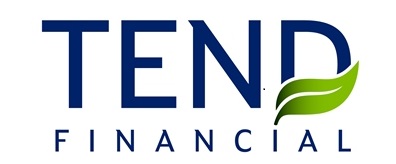If you’d invested $10,000 into the whole Australian share market back in 2002, your initial investment amount would have grown to almost $50,000 by 30 June 2022.
It’s a huge gain. Around 385 per cent to be precise. And, to achieve it, all that you would have needed to do is reinvest all the Australian company dividends you’d received over the last 20 years back into the Australian share market.
You could have achieved similar returns by investing through a managed fund or an exchange traded fund (ETF) that tracks the broad Australian share market.
Yet, as good as that all sounds, you could have done much better if you had added to your initial $10,000 investment by making regular monthly investment contributions.
How much better? Just by adding $250 per month your Australian share market investment would have surged to more than $180,000.
In other words, for $60,000 in total additional contributions over 20 years, your end investment would have been worth over $130,000 more than if you had made no extra contributions.
The numbers, which assume you incurred no investment management fees, indirect costs, or buy/sell spreads, obviously get larger if you had made higher regular monthly contributions.
By adding $500 per month to the initial $10,000 amount your investment would have grown to more than $317,000.
That’s a $130,000 total investment ($10,000 plus $120,000 in other contributions) over 20 years to achieve an investment worth $270,000 more than if you had just left your initial investment to grow on its own.
This growth reflects the additional capital contributed together with the market returns on the higher investment balance.
Here’s how those numbers would have looked based on the actual performance of the All Ordinaries Accumulation Index (which measures the Australian share market) from 1 July 2002 to 30 June 2022.
The benefits of regular contributions
|
Date |
No extra contributions* |
$250 per month |
$500 per month |
|
1 July 2002 |
$10,000 |
$10,000 |
$10,000 |
|
30 June 2007 |
$24,432 |
$52,047 |
$79,661 |
|
30 June 2012 |
$19,832 |
$57,104 |
$94,378 |
|
30 June 2017 |
$34,329 |
$117,332 |
$200,335 |
|
30 June 2022 |
$48,503 |
$182,931 |
$317,359 |
Source: Vanguard. *Assumes the reinvestment of income distributions and does not take into consideration investment management fees, indirect costs, and buy/sell spreads. Past performance information is given for illustrative purposes only and should not be relied upon as, and is not, an indication of future performance.
It’s only when you compare the results side by side that the full picture becomes much clearer.
An initial contribution amount combined with a regular investment savings strategy and the reinvestment of distributions over time will deliver much higher long-term results.
In the example used above, there would have already been a significant gap after just five years (in 2007) between investors who had not made additional contributions versus those that had.
And you can see that gap would have kept on widening over time. After 20 years, any investors who had followed a $250 per month regular contributions plan would have ended up with more than three times the amount of money than investors who had made no additional contributions.
A $500 per month contributions plan would have increased the differential to more than six times.
Understanding dollar-cost averaging
There’s another major advantage in making regular investment contributions, which brings into play a well-known portfolio strategy called dollar-cost averaging.
You may not realise it, but you’re probably already undertaking this strategy (indirectly) if you’re a member of a super fund.
Here’s how dollar-cost averaging works. Every time your employer makes a contribution into your super fund account it’s automatically invested by your fund according to the default investment strategy that you’ve chosen.
Maybe you’ve selected a “high-growth” super option, a “balanced” option, or a “conservative” option.
Behind the scenes your super money is most likely being directed into different managed funds, which invest into shares, bonds, cash, and other types of assets.
While the amount of super your employer pays doesn’t change, your investment purchasing power does change every time you receive a new super contribution.
That’s because the prices of the managed fund units your super fund is investing into does change every day.
If those managed fund unit prices have risen since your last contribution, then your super fund will be purchasing fewer units than last time.
Likewise, if the managed fund unit prices have fallen in value, your super fund will be purchasing more units than last time.
This strategy works in exactly the same way if you make regular contributions at set intervals outside of your super to buy units directly in other managed funds and ETFs.
You’ll automatically buy more units when market prices are lower and fewer units when prices are higher.
Over the total period that you keep investing, your average entry cost into specific assets will potentially be lower than if you’d try to guess the best time to buy in.
As your unit balance grows over time, your corresponding distributions via company dividends and other payments will also keep on growing. That’s the magic of compounding investment returns.
Just like your super contributions, it’s all really about sticking to a disciplined, non-emotional approach to investing that’s not affected by what’s happening on financial markets at any point in time.
Making regular contributions, and taking advantage of dollar-cost averaging, really adds up.
They’re a powerful combination in helping you to focus on achieving your investment goals, ideally through an appropriately diversified portfolio, to give you the best chance of investment success over the long term.
Having a diversified investment strategy can help you reach your financial goals sooner. Call us on (08) 8362 4555 if you’d like to discuss your investment portfolio.
Source: Vanguard
Reproduced with permission of Vanguard Investments Australia Ltd
Vanguard Investments Australia Ltd (ABN 72 072 881 086 / AFS Licence 227263) is the product issuer. We have not taken yours and your clients’ circumstances into account when preparing this material so it may not be applicable to the particular situation you are considering. You should consider your circumstances and our Product Disclosure Statement (PDS) or Prospectus before making any investment decision. You can access our PDS or Prospectus online or by calling us. This material was prepared in good faith and we accept no liability for any errors or omissions. Past performance is not an indication of future performance.
© 2022 Vanguard Investments Australia Ltd. All rights reserved.
Important:
Any information provided by the author detailed above is separate and external to our business and our Licensee. Neither our business nor our Licensee takes any responsibility for any action or any service provided by the author. Any links have been provided with permission for information purposes only and will take you to external websites, which are not connected to our company in any way. Note: Our company does not endorse and is not responsible for the accuracy of the contents/information contained within the linked site(s) accessible from this page.



